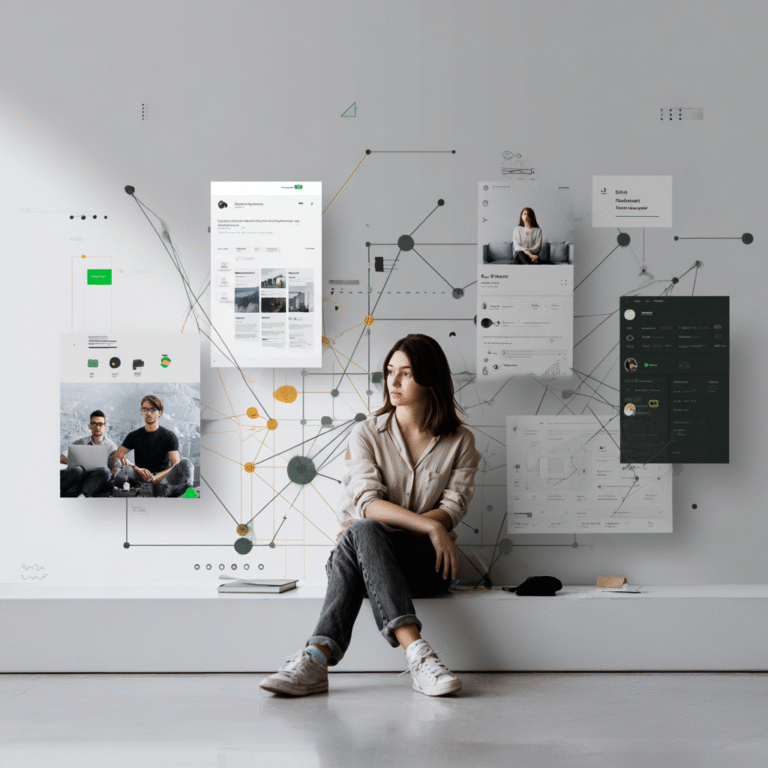Unlock Your Potential: Top 5 Creative Coding Guides (2025)
For centuries, the tools of creativity were physical: paintbrushes, clay, charcoal, and ink. Today, a new tool has emerged, one with the power to generate infinite visual complexity and dynamic interaction: code. The world of creative coding treats programming not as a rigid engineering discipline, but as a boundless medium for artistic expression.
This fusion of art and technology is powering a cultural and economic boom. The generative art market alone is exploding, with some market analyses projecting it to grow by over 25% annually. But for many artists and designers, the question remains: “Where do I even start?” The perception of code as a cold, logical domain can be intimidating.
This guide is your map into that vibrant world. We have curated the top 5 creative coding guides, platforms, and resources for 2025. These are the definitive starting points that will help you transform your creative vision into interactive art, stunning data visualizations, and mind-bending generative patterns.
What is Creative Coding, Really?
Creative coding is a broad discipline that sits at the intersection of programming and the arts. Instead of building functional applications, creative coders use software and algorithms to create expressive works. The final product might be:
- Generative Art: Visuals created by an autonomous system, often with elements of randomness.
- Interactive Installations: Physical or digital art that responds to user input, like motion or sound.
- Data Visualization: Turning complex datasets into beautiful and insightful graphics.
- Live Visuals for Music: Real-time graphics that react to audio.
The key philosophy is a focus on process and expression over pure functionality. It’s about asking “What if?” with code.
The Top 5 Creative Coding Guides for 2025
These five resources are legendary in the creative coding community for their accessibility, depth, and ability to inspire.
-
1. The Coding Train with Daniel Shiffman
The Coding Train is a massively popular YouTube channel hosted by the infectiously enthusiastic Daniel Shiffman. It is, without a doubt, the most beloved entry point for countless creative coders.
Why it’s great: Dan’s joy is contagious. He breaks down complex topics—from the basics of p5.js to the intricacies of neural networks—into fun, high-energy, live-coding sessions. He makes mistakes, debugs on the fly, and celebrates every small success, perfectly demystifying the coding process.
Who it’s for: Absolute beginners, visual learners, and anyone who thinks coding is boring. His style is perfect for students and hobbyists.
Key Skill You’ll Learn: Foundational programming concepts using the accessible and web-friendly p5.js library.
-
2. The Book of Shaders by Patricio Gonzalez Vivo & Jen Lowe
The Book of Shaders is an essential, free online book that gently introduces you to the world of fragment shaders. Shaders are small, powerful programs that run directly on the graphics card, used to create incredibly complex and efficient visual effects, patterns, and generative art.
Why it’s great: It takes a famously difficult topic and makes it accessible through interactive examples. Each chapter allows you to edit the code directly in the browser and see the results instantly, providing a tight feedback loop that is crucial for learning.
Who it’s for: Intermediate coders or ambitious beginners who want to understand how the mesmerizing patterns seen in generative art are truly made.
Key Skill You’ll Learn: A deep understanding of GLSL (OpenGL Shading Language) and the mathematical principles behind generative patterns.
-
3. Processing.org Tutorials and Reference
Processing is the original creative coding platform that started it all. Created by Casey Reas and Ben Fry at MIT Media Lab, it’s a flexible software sketchbook and language for learning how to code within the context of the visual arts.
Why it’s great: The official tutorials on the Processing website are a masterclass in pedagogy. They are clear, concise, and project-based. The reference documentation is legendary for its clarity and simple examples. The stability and maturity of the platform make it a reliable choice.
Who it’s for: Artists and designers who want a standalone development environment and are interested in creating desktop applications or complex data visualizations.
Key Skill You’ll Learn: The fundamentals of object-oriented programming in a visual context, using the Java-based Processing language.
-
4. “Generative Art: A Practical Guide” by Matt Pearson
While there are many books on the topic, this one remains a classic for a reason. It’s less about teaching a specific library and more about teaching the *mindset* and the *mathematical concepts* behind generative art, such as randomness, oscillation, and complexity.
Why it’s great: It provides the conceptual “why” behind the code. It teaches you to think in systems and patterns, which is the core skill of a generative artist. The code examples (often in Processing) are there to illustrate the concepts, not just to be copied.
Who it’s for: The artist who wants to move beyond tutorials and understand the deeper theories of generative art to develop their own unique style.
Key Skill You’ll Learn: Algorithmic thinking and the conceptual foundations needed to create original generative art systems.
-
5. p5.js Web Editor and Reference
The spiritual successor to Processing, p5.js brings the same creative coding principles to the web using JavaScript. The official website, particularly the web editor and extensive reference section, is a complete learning ecosystem.
Why it’s great: Accessibility. Anyone with a web browser can start coding immediately without installing any software. The online editor makes it easy to experiment and share your creations with a simple link. The community is massive and incredibly supportive.
Who it’s for: Beginners, web developers, and educators who want the easiest possible entry point into creative coding.
Key Skill You’ll Learn: How to create interactive, browser-based sketches and animations using JavaScript, a foundational skill for modern AI and design applications.
Frequently Asked Questions
Do I need to be good at math to learn creative coding?
Not necessarily to start. Many creative coding concepts rely on simple geometry and arithmetic. Resources like The Coding Train excel at explaining the necessary math in an intuitive, visual way. While advanced generative art does involve more complex mathematics, you can create amazing things with just the basics.
What’s the difference between Processing and p5.js? Which should I learn?
Processing is a standalone application based on Java. p5.js is a JavaScript library that runs directly in a web browser. For absolute beginners in 2025, p5.js is generally recommended because it requires no setup and the skills are directly transferable to web development. If you are interested in building more performance-intensive desktop applications, Processing is still an excellent choice.
Can I make a career out of creative coding?
Yes. Creative coders are in high demand for roles in data visualization, UI/UX engineering for interactive experiences, advertising, museum installations, and as independent artists selling generative art as prints or NFTs. The skills you learn are a unique blend of technical and artistic, which is highly valuable.





